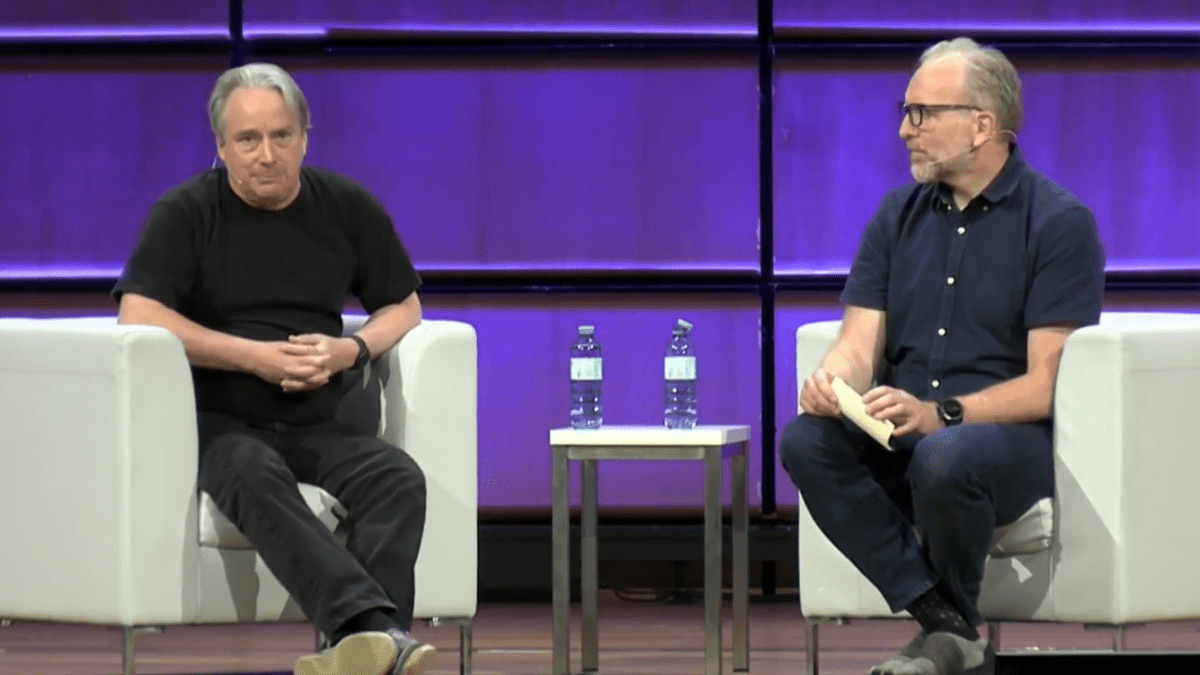Linux’s luminary linchpin, Linus Torvalds, says that despite longstanding reports of burnout in the open source software development realm, Linux is as strong as ever — though he acknowledges his project is perhaps something of an outlier due to its scale and scope.
Speaking to Verizon’s head of open source Dirk Hohndel at the Linux Foundation’s Open Source Summit Europe in Vienna on Monday, Torvalds tackled a topic that has frequently reared its head in the Linux world and beyond: an aging developer community prone to burnout.
“It is absolutely true that [Linux] kernel maintainers are aging, but there is a positive spin on that,” Torvalds said. “How many [open source] projects have maintainers that have literally been around for over three decades? It is very unusual. So when people say, ‘developers burn out and go away’ — yes, that’s true, but that’s kind of normal. What is not normal is that people actually stay around for decades, that’s the unusual thing, and I think that’s to some degree a good sign.”
Historically, Linux was very much a C-centric kernel, but in 2022 the project introduced official support for Rust, a general-purpose, open-source programming language backed by many big-name technology companies. Just a few weeks back, Rust for Linux project lead Wedson Almeida Filho announced they were stepping down after almost four years, as they found themselves “lacking the energy and enthusiasm” to deal with some of the “non-technical nonsense” surrounding the project.
And back in January, senior Rust engineer Jynn Nelson also noted that the burnout problem is very real. “The number of people who have left the Rust project due to burnout is shockingly high,” Nelson wrote. “The number of people in the project who are close to burnout is also shockingly high.”
The trust factor
Linux is probably the most successful open-source project of all time, intersecting with everything from web servers and ATMs, to desktop and mobile operating systems. During these growth years, Torvalds has branched out and created the omnipresent version control system known as Git. But some 33 years on from Linux‘s inception, Torvalds remains the kernel’s central maintainer, with support from tens of thousands of contributors stemming from corporations reliant on Linux, as well as sources closer to home such as Linux Foundation fellow Greg Kroah-Kartman, who leads on the Linux kernel’s stable release.
“I think part of the issue with us having a lot of developers, is that we’ve always had a lot of people who are very competent and could step up,” Torvalds said. “Greg hasn’t always been Greg — before Greg, there were Andrews and Allens, and after Greg there will be Shannons and Steves. There are people who have been around for decades, and the real issue is that you have to have a person — or a group — that people in the development community can trust. And part of trust is fundamentally about having been around for ‘long enough’ that people know how you work.”
However, Torvalds acknowledged that such an ecosystem can be daunting and difficult for younger or less-experienced developers to enter, especially when they see incumbents that have been around so long. But despite that, there are newcomers who manage to make their way into the heart of the Linux project.
“We have core developers that are top-level maintainers for major subsystems, who have come up in just a few years,” Torvalds said. “It’s not instant, but there are new people who come in, and three years later they are a main developer. It is not impossible at all. I think we have a fairly healthy developer subsystem, but the whole monkey dance about developers, developers, developers… we’ve got them. The fact that we also have these old, ‘graying’ people around — I don’t see that as a huge problem.”

